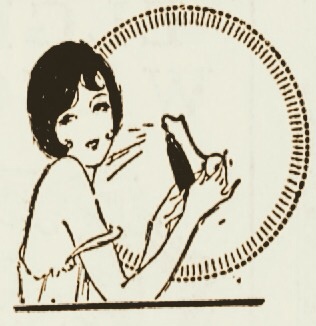 |
| People may associate some terminology to periods of colonisation and assimilation, so do not use the words Aboriginals, Aborigine or Aborigines... “Some non-verbal communication cues (hand gestures, facial expressions etc.) used by Aboriginal and Torres Strait Islander people have different meanings in the Western context. Be mindful that your own non-verbal communication will be observed and interpreted. For example, feelings of annoyance may be reflected by your body language and are likely to be noticed.” according to Queensland Health. Two distinct groups of Indigenous people live in Australia. One group is the Torres Strait Islanders, who come from the Torres Strait Islands north of Cape York in Queensland. The second group is the Aboriginal people, who come from all other parts of Australia. |
Having been born and lived in Australia most of my life, we were taught that the Australian Aboriginals were the first to occupy and that was it. Unfortunately, 35 years ago, we were not taught how to interact, understand their language or culture. Today, going into classrooms now, we are better equipped and regularly have interactions with elders and now have cultural centres where we can better understand their connections to land and people.
What is Aboriginal and Torres Strait Islander etiquette? I recently asked a Yorta Yorta brother and a Pitjantjatjara sister both living in Alice Springs, their advice:
These traditional cultures place importance with building and maintaining rapport and trust. When introducing yourself, do it with warmth and sincerity. Talk about yourself first. Be slow, simple and methodical, as English may not be their first language. Dialects such as Kriol, Aboriginal English or Torres Strait Creole may be spoken. There are over 300 Aboriginal languages spoken throughout Australia and Torres Strait Islands.
It's best to avoid eye contact at first and look away while you are talking. It is a gesture of respect. Direct eye contact may be viewed as aggression, rudeness and disrespectful. Always observe the other person's body language, then use it to guide your own facial expressions and body language. Be mindful of cross-gender eye contact, only do so when there is conversation initiated.
Avoid asking too many questions, if you are not familiar with them, explain why you need to ask questions. The best way is to speak about who you are, where you are from, where your family is from and where you’re going. Perhaps, use a story to get the answer to your question. They will tend to open-up.
A form of direct respect is using the titles of ‘Aunty’ or ‘Uncle’, they may not be your actual family or even older than you. If you have been living in an area a long time and are familiar with its people, you may be honoured and asked to call someone their ‘sister’ or ‘brother’.
Listening is imperative. Due to spoken and body language differences, the person may make an explanation of something in a way that you are not used too. Take time out to actively listen, do not interrupt or talk-over, show kindness. You may want to paraphrase and repeat back what they said to show you are listening and wanting to understand.
Be aware that due to language differences or due to shyness, that an Aboriginal and Torres Strait Islander may say ‘yes’ to your questions, even if they are not in agreement with you. They may simply wish to end the conversation and by saying ‘yes,’ they feel like they can conclude the exchange, especially if they do not understand what you are saying. It is wise to take time to explain in a parable or story, what you need or require. You may need to find an interpreter.
Be mindful of personal space. Standing too close, especially with the opposite gender, could be sending signals that could be interpreted wrongly. Best to keep the usual amount of distance away. Always ask permission to touch another person.
Time is counted differently. Community values and family responsibilities will be prioritized over time. When making an appointment, be flexible.
Breaches of confidentiality can lead to shame (shame is the feeling of humiliation or distress) based on over-sharing personal and private information with others. It is advised to have serious discussions, holding it in a place the person is most comfortable, private and away from public spaces. Talking about ‘men’s’ and ‘women’s’ business needs to be kept private and confidential, you want to engender trust and rapport. Once that is broken, all association with that person could end permanently.
If you are travelling around Australia and Torres Strait Islands and want to walk on their land, you must ask for the owner or elder permission to approach them, then you are able to ask if you're able to walk on their land. You must be able to make an acknowledgment of country. It is a way that we can show respect for Aboriginal and Torres Strait Islander heritage and have an ongoing and open relationship with the traditional owner of the land.
Please be aware, different states, different areas, tribes or associations of Aboriginal and Torres Strait Islanders, culture and language will differ.
For many years, Etiquipedia contributor, Elizabeth Soos, has had a keen interest in cultural customs. With her European background and extensive travel, Soos developed an interest in the many forms of respect and cultural expectations in the countries she has visited. With her 20 years’ experience in customer service within private international companies based in Australia, and her lifetime interest in manners and research, she decided to branch out into the field of etiquette and deportment. Through her self-directed studies and by completing the Train-The-Trainer’s course offered by Emma Dupont’s School of Etiquette in London and by Guillaume Rue de Bernadac at Academie de Bernadac based in Paris and Shanghai, she founded Auersmont School of Etiquette.
Etiquette Enthusiast, Maura J Graber, is the Site Editor for the Etiquipedia© Etiquette Encyclopedia


















